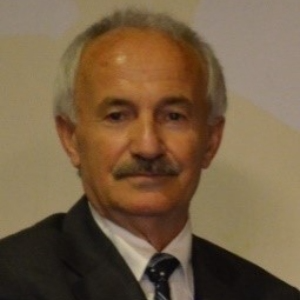Title : Shape reversibility and diffusionless transformations in shape memory alloys
Abstract:
Shape memory alloys take place in a class of advanced smart materials by giving stimulus response to changes in the external conditions. These alloys are adaptive structural materials and exhibit a peculiar property called shape memory effect, with the recoverability of two shapes at different conditions. This phenomenon is initiated with thermomechanical treatments on cooling and deformation and performed thermally on heating and cooling, with which shape of the material cycles between original and deformed shapes in reversible way. Therefore, this behavior can be called thermal memory or thermoelasticity. Deformation in low temperature condition is plastic deformation, with which strain energy is stored in the materials and releases on heating by recovering the original shape. This phenomenon is governed by the diffusionless phase transformations in crystallographic level, thermal and stress induced martensitic transformations. Thermal induced martensitic transformations occur on cooling with cooperative movement of atoms in <110 > -type directions on a {110} - type plane of austenite matrix, by means of lattice invariant shears, along with lattice twinning and ordered parent phase structures turn into the twinned martensite structures. The twinned structures turn into detwinned martensite structures by means of stress induced martensitic transformations with deformation. Atomic movements are confined to the nearest atom distances, and these transformations have diffusionless character. These alloys exhibit another property, called superelasticity, which is performed with mechanically stressing and releasing in elasticity limit at a constant temperature in the parent phase region, and material recovers the original shape upon releasing, by exhibiting elastic material behavior. Superelasticity is performed in non-linear way, stressing, and releasing paths are different, and cycling loop refers to the energy dissipation. Superelasticity is also result of stress induced martensitic transformation, and the ordered parent phase structures turn into the detwinned martensite structures with stressing. Copper based alloys exhibit this property in metastable β-phase region with chemical composition, which has bcc-based structures at high temperature parent phase field. Lattice invariant shear and twinning is not uniform in these alloys, and cause to the formation of layered structures, like 3R, 9R or 18R depending on the stacking sequences on the close-packed planes of the ordered lattice. In the present contribution, x-ray and electron diffraction studies were carried out on copper based CuAlMn and CuZnAl alloys. X-ray diffraction profiles and electron diffraction patterns exhibit super lattice reflections. Critical transformation temperatures of these alloys are over room temperature. The specimens were aged at room temperature and taken a series of x-ray diagram during aging. X-ray diffractograms taken in a long-time interval show that diffraction angles and intensities of diffraction peaks change with the aging duration at room temperature. This result refers to the rearrangement of atoms in diffusive manner.
Keywords: Shape memory effect, martensitic transformation, thermoelasticity, superelasticity, lattice twinning, detwinning.
Audience Takeaway Notes:
- Shape memory alloys are functional materials and used in many fields from biomedical application to the building industry.
- This is a multidisciplinary conference, and I will introduce the basic terms and definition at the beginning of my talk and continue with experimental results.
- This is important, because, every scientist is not familiar with every subject of the science, and basic knowledge in elementary level, in order the audience will learn the basis of the presented lectures.



